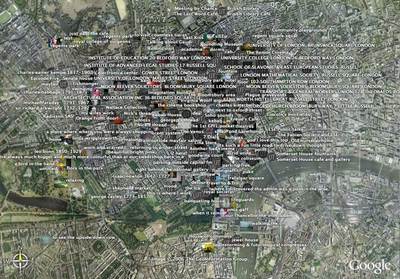Over the past two years of Social Tapestries we have been collaborating with Kevin Harris, first at the Community Development Foundation, and, since last summer, in his capacity as an independent community development consultant working as Local Level. Through Kevin we encountered Bev Carter of Partners in Change and were invited to work with the Havelock Independent Residents' Organisation (HIRO) to explore how our ideas and practices of public authoring – knowledge mapping and sharing – could make a difference at neighbourhood level.
Proboscis and Local Level began working with HIRO last July and Kevin has now written a Cultural Snapshot about what we have learnt of the issues and challenges facing local people.
Common Knowledge
Community development and communication on a housing estate
Residents striving to improve conditions on a low-income estate face a range of problems that are appropriate for collective action. But their ability to act collectively may be constrained by a range of factors. This essay offers an impressionistic view of conditions on the Havelock estate in Southall, west London, based on an assessment of the communication and information ecology.
The essay offers a snapshot of the physical conditions, low levels of social interaction, and ‘civic absence’ that characterises the neighbourhood. It notes the sense of weakening community presence in the face of unresponsive environmental services and a looming drugs threat. It attempts to explain why participation in community initiatives is sometimes very difficult to establish or sustain, and it contrasts this reactive, fragmentary style of urban life with the contemporary image of lively urban consumption.
As we are nearing completion of version 2 of the Urban Tapestries public authoring platform we are pleased to release a network link for Google Earth to all the content uploaded by participants in the original trials of the UT prototypes back in December 2003 and June/July 2004. The new UT system will allow users to create their own custom KML/KMZ files from content on the system to download and use in Google Earth. We are also investigating opportunities for enabling users to upload datasets from Google Earth in future versions (beyond 2.0). The key hurdle will be marrying up metadata (such as author, date of creation etc) so that content will not be duplicated on Urban Tapestries from similar datasets being downloaded and re-uploaded by multiple users.
